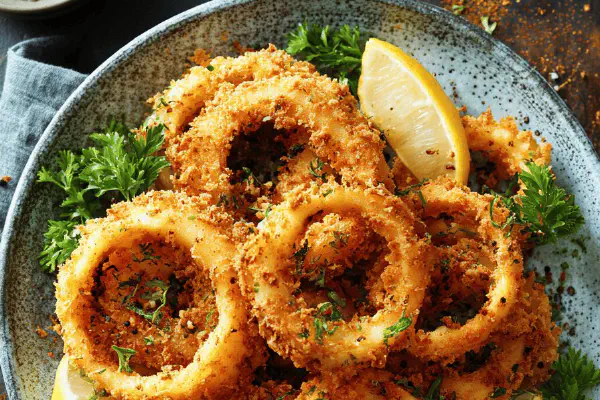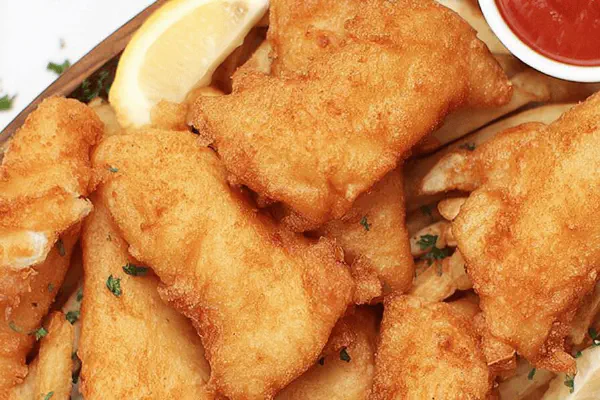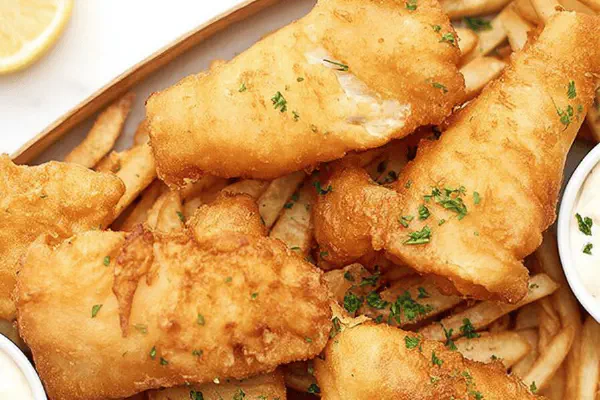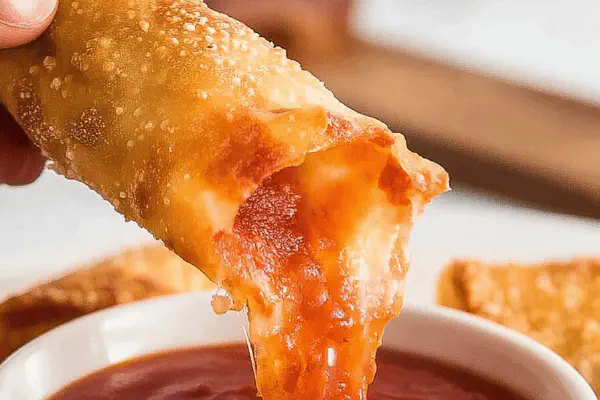Beer Battered Onion Rings

By Emma
Certified Culinary Professional
Ingredients
- Canola oil for frying, about 500 ml (2 cups)
- 180 ml (¾ cup) all-purpose flour, unbleached
- 310 ml (1 1/3 cups) all-purpose flour, unbleached
- 2.7 ml (½ tsp) fine salt, divided
- 1.2 ml (¼ tsp) cayenne pepper
- 1 bottle (355 ml) cold pale ale beer, not too bitter
- 2 large onions, cut into 0.5 cm (¼ inch) thick rings, peeled apart
- Freshly ground black pepper, to finish
About the ingredients
Method
- Heat oil in deep fryer or heavy pot to 185 °C (365 °F). Oil temp is non-negotiable; too cool equals greasy, too hot burns outside. Use thermometer or test with small flour drop—should sizzle immediately.
- Line baking sheet with paper towels or set wire rack over tray to drain rings post-fry. Keeps them crisp, not soggy.
- Put 180 ml flour in medium bowl. Season with half the salt and a few grinds black pepper. Reserve for dry dredge.
- In separate big bowl, combine remaining 310 ml flour, rest of salt, cayenne. Pour in cold beer slowly, stir gently with fork just to blend. Batter should be lumpy, loose. Overmix ruins airy texture; some clumps okay.
- Toss few onion rings in dry flour mix first, tap off excess like dusting powder. This step vital—dry flour helps batter stick and prevents sliding off mid-fry.
- Dip floured rings into beer batter, let excess drip back in bowl. Slides into hot oil gently; avoid crowding to maintain oil temp and crisp edges.
- Fry until golden brown, 2 ½ to 3 ½ minutes judged by color and surface texture—slight bubbling on edges, deep golden hues. Shake basket or flip rings mid-fry if using pot. Don’t rush, texture will tell you more than clock.
- Remove rings with slotted spoon, place on prepared sheet or rack. Season immediately with pinch of salt to enhance crunch and flavor.
- Repeat for remaining onions in batches. Keep finished rings warm in oven at lowest setting if making ahead but best fresh out of oil.
- Serve sprinkled with fresh black pepper. Bonus twist: try smoked paprika instead of cayenne for earthier heat or add garlic powder to flour mix for punch.
- Tip for soggy troubles: Ensure onion slices dry before dredging. Wet onions steal crispness. Pat with paper towel if needed.
- If pale ale unavailable, dry lager works; avoid stouts or too bitter brews—they weigh batter down. Substitute potato starch for part of flour to boost crunch, up to 30%.
- When frying, look for tiny bubbles on ring edges beyond color cue—not too many or batter absorbs oil. Visual crispiness beats stopwatch.
Cooking tips
Chef's notes
- 💡 Heat oil steady at 185 °C. Too low oil lets batter soak oil. Too high burns outside, raw inside. Use thermometer or test drop flour—instant sizzle means ready. Watch oil temp mid-fry, adjust heat. Crowding drops temp fast; fry small batches for crisp edges.
- 💡 Dry dredging with part flour crucial. Dust onion rings lightly; flour sticks batter better. Without flour coat, batter slides off, makes greasy mess. Split salt diverts flavor layering—half in dredge, rest in batter. Adds punch but no yeast dulling as in full salt in batter.
- 💡 Batter lumps okay. Stir gently just blend beer and flour mix; too much breaks airy texture. Lumps mean less gluten overdevelopment. Too thin batter drips off rings; too thick clumps. Adjust with beer or flour by spoonful. Use cold beer to slow gluten and keep light coat.
- 💡 Visual cues over time. Look for deep golden with tiny bubbling edges. Sound of batter sizzle crackling margin—thick batter crackles when cooking. If too many bubbles, batter absorbs oil; fry temp probably off. Flip mid-fry if using pot, shake basket gently in fryer.
- 💡 Onions drying matters. Pat rings dry before flouring; wet rings wreck crust, soak oil. Paper towels best. Keep batter cold until used—warmer batter gels gluten, ruins airiness. Salt immediately after frying, salt drains moisture out if added too soon. Keep rings warm on rack over sheet.
Common questions
Why split flour for dredging and batter?
Dredge coats onions first; batter sticks better. Without dry flour, batter slips off or pools below. Also salt split into dredge and batter; keeps flavor bright. Yeast in beer reacts differently with salt—too early dulls flavor.
What if I don’t have pale ale?
Use dry lager best. Avoid stouts or bitter dark beers—they weigh batter down, turn flavor heavy. Chilled carbonated water with dash lemon juice is tried backup. Slight batter change but keeps crisp. Potato starch can substitute part flour for crunch boost.
How to prevent soggy rings?
Dry onions well. Oil temp steady at 185 °C is key. Fry small batches. Salt only after frying. Cooling rings on wire rack better than paper towel for crispness. Reheat in oven low temp to revive crunch. Avoid microwave—kills texture fast.
Best storage method?
Leftovers must be single layer on wire rack to keep crisp. Fridge makes soggy skin if stacked. Reheat in oven lowest temp—recrisp batter. Don’t cover tight. Fry fresh if possible. Don’t reuse frying oil for flavor integrity; oil degrades fast after frying onion rings.



